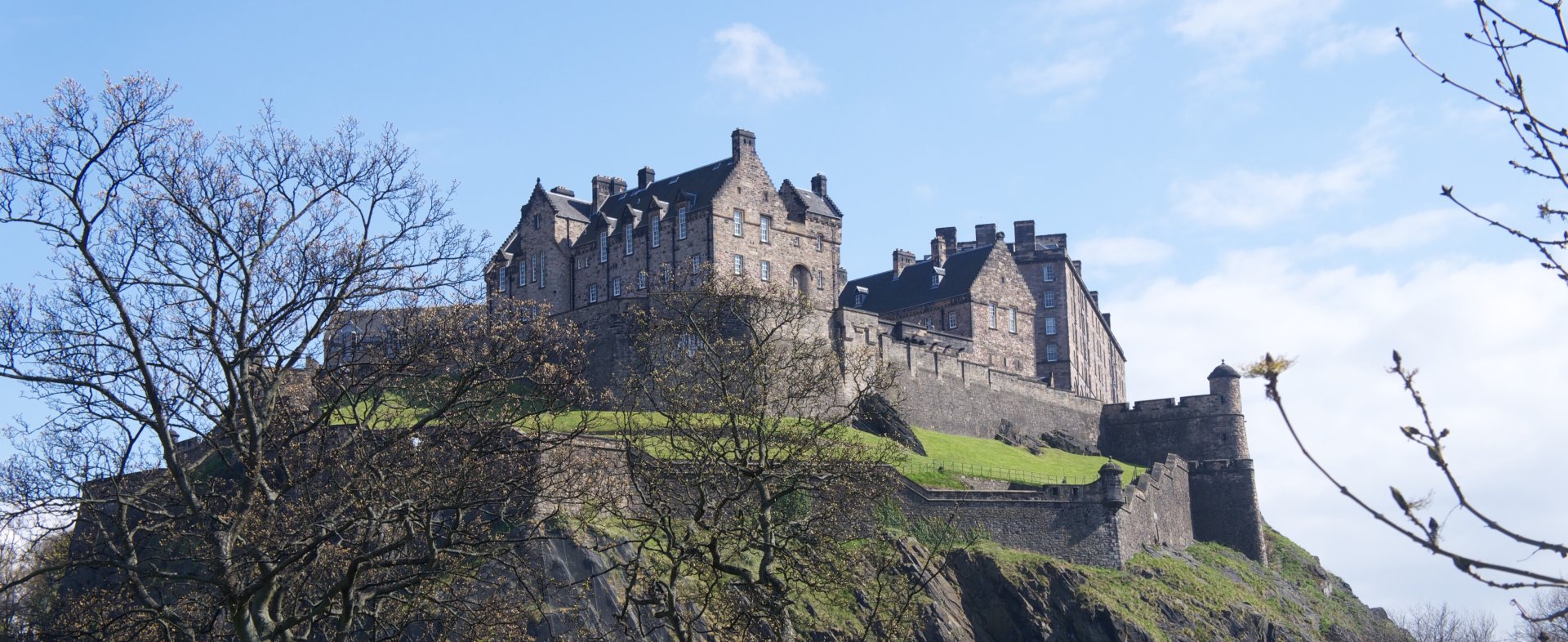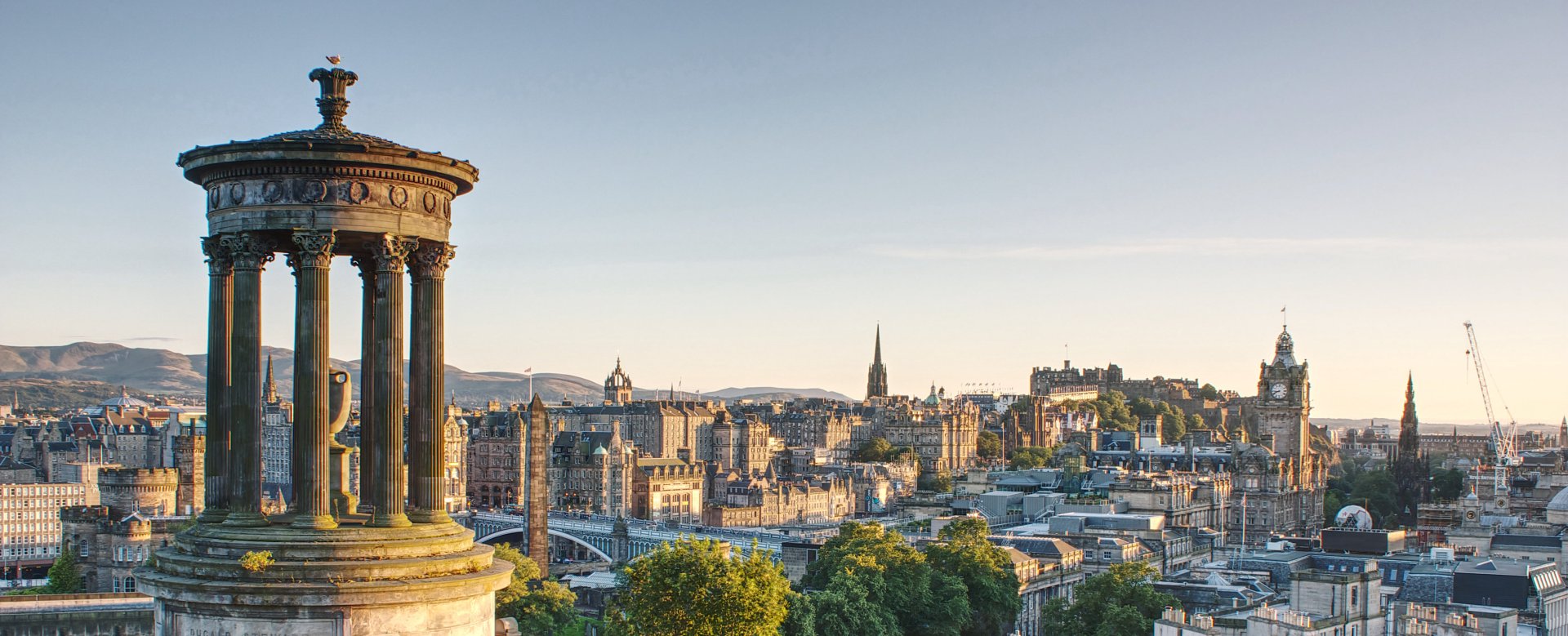What to do in Edinburgh
Edinburgh is the capital city of Scotland and is located in south-east Scotland. It is bounded to the north by the Firth of Forth estuary and to the south by the Pentland Hills. Edinburgh has a population of about 1/2 a million, making it the second-most populous city in Scotland and the seventh-most populous in the United Kingdom.
Recognized as the capital of Scotland since at least the 15th century, Edinburgh is the seat of the Scottish Government, the Scottish Parliament, the highest courts in Scotland, and the Palace of Holyroodhouse, the official residence of the British monarch in Scotland. It is also the annual venue of the General Assembly of the Church of Scotland. The city has long been a center of education, particularly in the fields of medicine, Scottish law, literature, philosophy, the sciences and engineering. The University of Edinburgh, founded in 1582 and now one of three universities in the city, is considered one of the best research institutions in the world.
The city is a cultural center, and is the home of institutions including the National Museum of Scotland, the National Library of Scotland and the Scottish National Gallery. National Museums in the UK are free for all visitors.
Historic sites in Edinburgh include Edinburgh Castle, the Palace of Holyroodhouse, the churches of St. Giles, Greyfriars and the Canongate, and the extensive Georgian New Town built in the 18th/19th centuries. Edinburgh’s Old Town and New Town together are listed as a UNESCO World Heritage Site, which has been managed by Edinburgh World Heritage since 1999. (adapted from Wikipedia)
Edinburgh Castle
 Perched atop Castle Rock overlooking the city, is Edinburgh Castle. It houses important Scottish artefacts, such as the Honours of Scotland - which are the oldest crown jewels in the UK - and The Stone of Destiny, an ancient symbol of the Scottish monarchy. (You need to buy a ticket to enter the castle.)
Perched atop Castle Rock overlooking the city, is Edinburgh Castle. It houses important Scottish artefacts, such as the Honours of Scotland - which are the oldest crown jewels in the UK - and The Stone of Destiny, an ancient symbol of the Scottish monarchy. (You need to buy a ticket to enter the castle.)
Located just outside the walls of Edinburgh Castle in front of the Gate House and castle ticket office is the castle esplanade. Whilst walking around, you can can take in the stunning views of the city that surround the castle.
Holyrood Park and Arthur’s Seat
 Holyrood Park is a short walk from Edinburgh’s Royal Mile in the heart of the city. It is a 640 acre Royal Park adjacent to Holyrood Palace.
Holyrood Park is a short walk from Edinburgh’s Royal Mile in the heart of the city. It is a 640 acre Royal Park adjacent to Holyrood Palace.
Perhaps one of the most iconic places to go in Edinburgh is Arthur’s Seat, located within Holyrood Park. This ancient volcano sits 251m above sea level and offers 360-degree views of Edinburgh and the Lothians.
Royal Mile
As the historic heart of the capital, the Royal Mile runs down the Old Town and connects Edinburgh Castle with the Palace of Holyroodhouse via a mile of cobbled street.
Calton Hill
 Calton Hill and the National Monument are situated in Central Edinburgh, east of Edinburgh’s New Town.
Calton Hill and the National Monument are situated in Central Edinburgh, east of Edinburgh’s New Town.
Marked as a UNESCO World Heritage Site, Calton Hill has some of the city’s best views and if you get up early, the best sunrises.
Calton Hill is also resident to some iconic Scottish monuments and buildings. Monuments include the National Monument, Dugald Stewart Monument, Nelson’s Monument, the Old Royal High School, Robert Burns Monument, Political Martyrs’ Monument and also the City Observatory.
Local Transport
Edinburgh is a very compact and walkable city. It is not unlikely that you will not need public transport for your entire stay, besides the connection to and from the Airport. Edinburgh has an extensive Bus network that is operated by Lothian Buses. You can pay contactless, or using Apple Pay, or Google Pay, when entering the bus. There is an automated daily cap so that you will always pay the lowest fare. To use the Tram you need to buy a ticket before you board. You can pay contactless, or using Apple Pay, or Google Pay at the ticket machines at every station. Uber works as a ride-hailing app in Edinburgh.